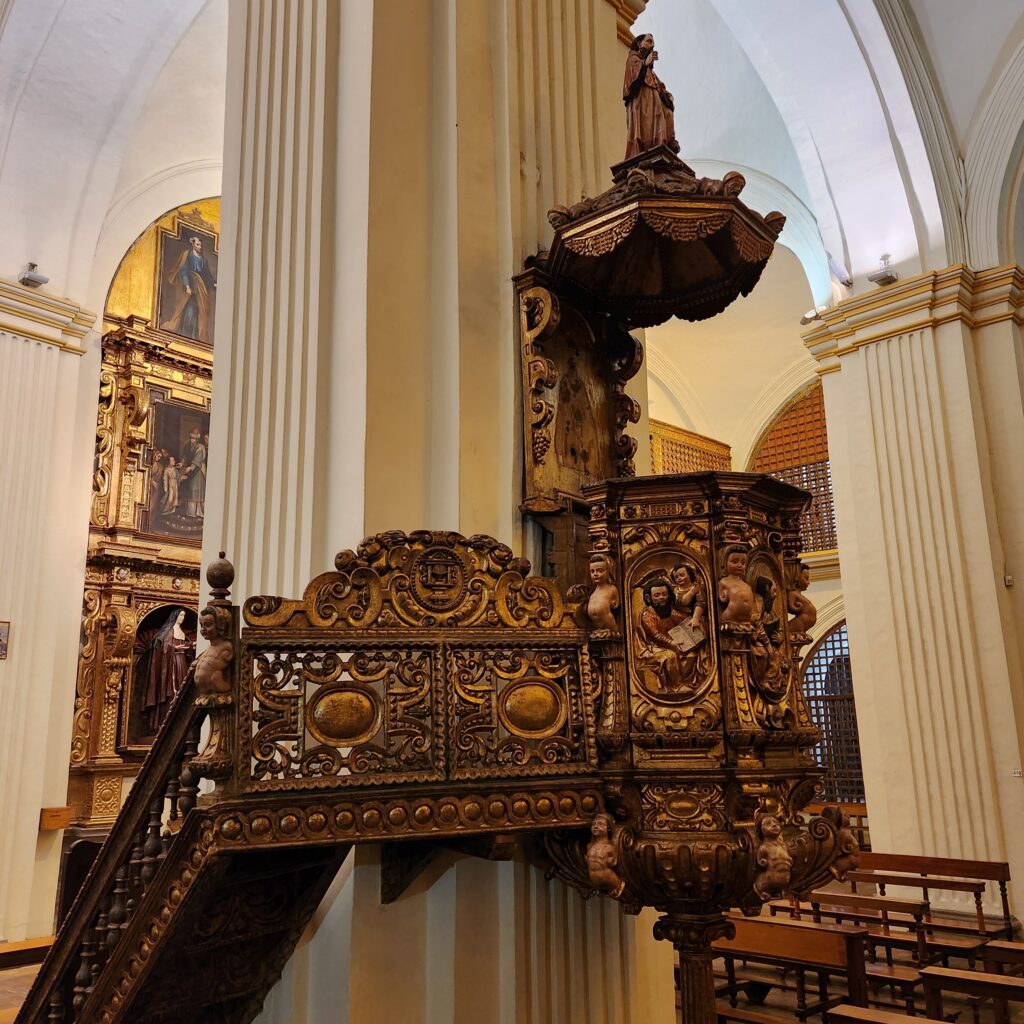La iglesia del cenobio quiteño destaca por su singular arquitectura, coronada por una cúpula oblonga de crucería y un crucero con cúpula ochavada. En su interior se aprecia una riqueza artística excepcional, con retablos barrocos y manieristas, como el del presbiterio realizado por el taller de Manuel Samaniego en 1797, donde sobresalen imágenes policromadas y obras de grandes maestros como Bernardo de Legarda.
Entre sus retablos más notables están los dedicados a Santa Coleta de Corbie, Santa Clara de Asís, San Antonio de Padua y la Virgen de los Corazones, todos elaborados con técnicas de pan de oro, estofado y policromía. También destacan el púlpito del siglo XVII, obra de la Escuela Quiteña, y el retablo del Cristo del Buen Suceso, que reúne esculturas y lienzos del siglo XVII y XVIII, reflejando el esplendor religioso y artístico de la época.

The church of the Quito monastery stands out for its unique architecture, crowned by an oblong ribbed dome and a transept with an octagonal dome. Its interior displays exceptional artistic richness, with Baroque and Mannerist altarpieces, such as the one in the presbytery, created by Manuel Samaniego’s workshop in 1797, featuring polychrome images and works by great masters such as Bernardo de Legarda.
Among its most notable altarpieces are those dedicated to Saint Coleta de Corbie, Saint Clare of Assisi, Saint Anthony of Padua, and Our Lady of the Hearts, all crafted using gold leaf, gilding, and polychromy techniques. Also noteworthy are the 17th-century pulpit, a work of the Quito School, and the altarpiece of Christ of Good Success, which brings together sculptures and paintings from the 17th and 18th centuries, reflecting the religious and artistic splendor of the period.
